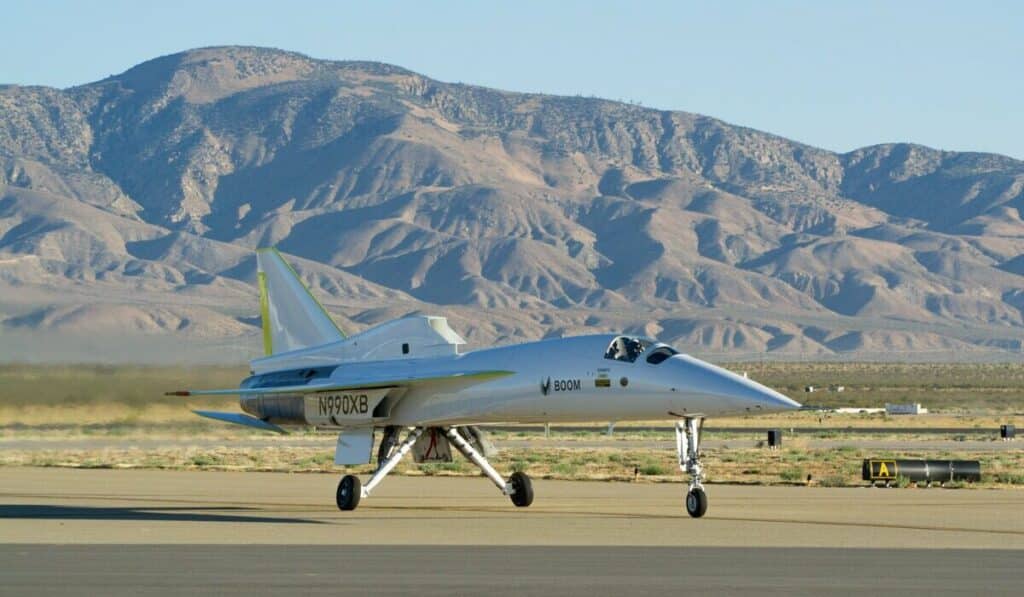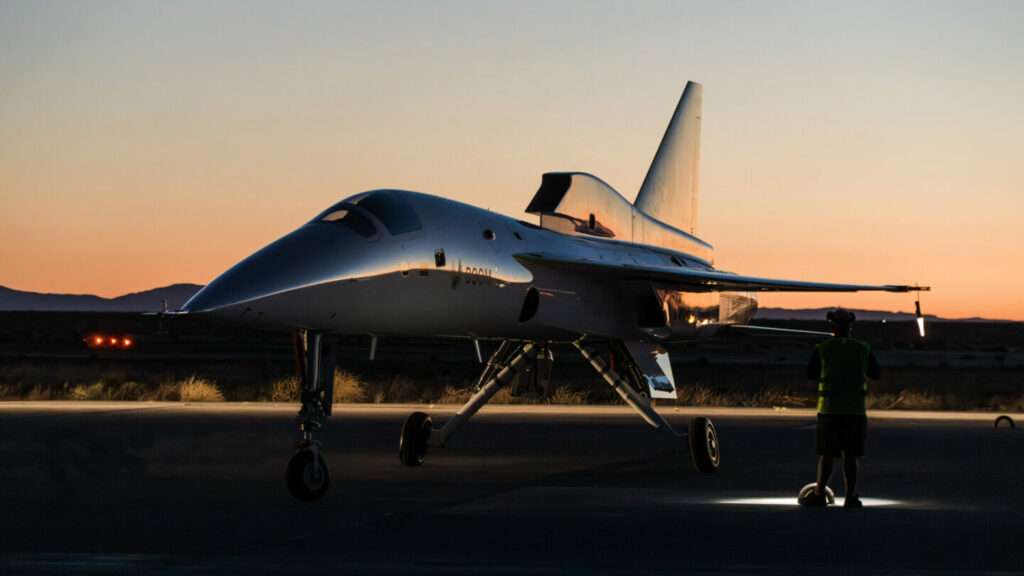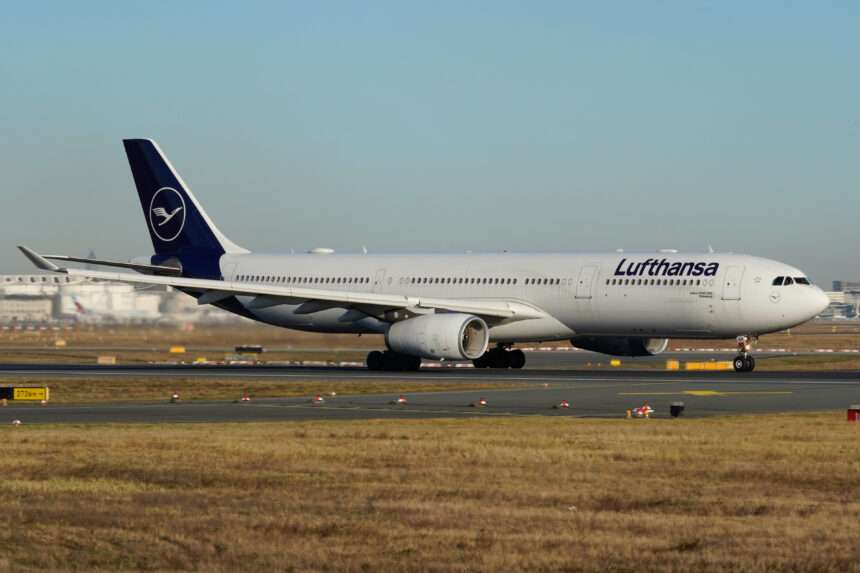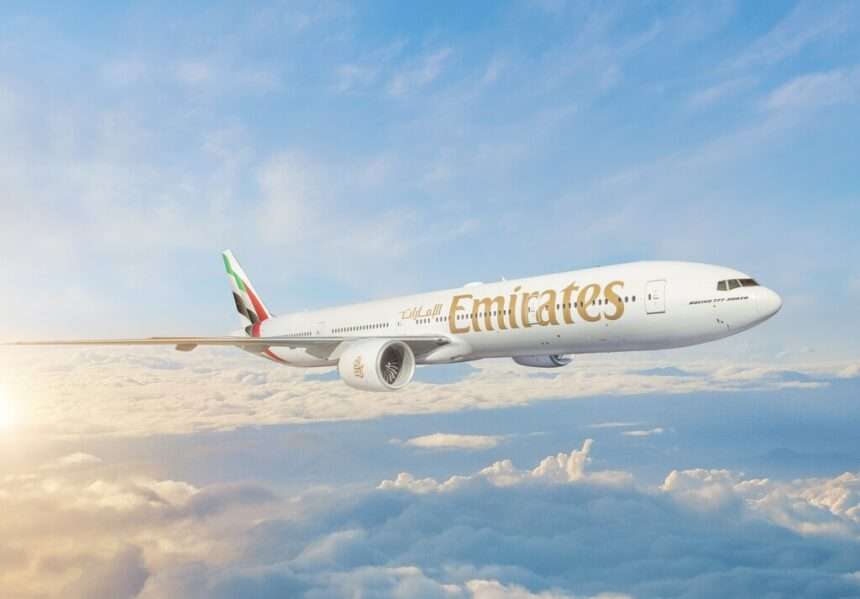Boom Supersonic’s XB-1, the world’s first independently developed supersonic jet, has been granted a crucial green light.
The U.S. Federal Aviation Administration (FAA) has issued a special flight authorization (SFA) allowing the XB-1 to exceed the speed of sound, paving the way for historic test flights.
Go for Supersonic Flight
The SFA comes after a thorough examination by the FAA, including an environmental assessment. The authorization extends to designated chase planes that will closely monitor XB-1 during its supersonic journeys, ensuring flight safety.
This news follows closely on the heels of XB-1’s successful maiden flight on March 22, 2024, at the Mojave Air & Space Port in California.
Boom’s chief test pilot, Bill “Doc” Shoemaker, expertly piloted the aircraft, while Tristan “Geppetto” Brandenburg flew the accompanying T-38 chase plane.
Notably, XB-1’s first flight took place in the same airspace that witnessed groundbreaking moments in aviation history, including the Bell X-1, North American X-15, and Lockheed SR-71 Blackbird.

Expanding the Flight Envelope
“We’re thrilled to witness XB-1’s historic first flight and eagerly anticipate its groundbreaking supersonic journey,” said Blake Scholl, founder and CEO of Boom Supersonic.
“We extend our gratitude to the FAA for supporting innovation and allowing XB-1 to play a pivotal role in shaping the future of supersonic travel.”
With its first flight a resounding success and supersonic authorization in hand, the Boom team is now focused on systematically expanding the XB-1’s flight envelope.
This meticulous process will involve confirming performance and handling characteristics as the aircraft approaches and surpasses Mach 1.
The program includes in-flight system checks and multiple test points designed to demonstrate safe margins beyond flutter boundaries (excessive vibration). An estimated 10 to 20 flights are planned before XB-1 reaches supersonic speeds.

Brandenburg to Pilot XB-1
When the moment arrives for XB-1’s first supersonic flight, test pilot Tristan “Geppetto” Brandenburg will be in command. Brandenburg, who monitored XB-1 during its inaugural flight, boasts an impressive resume.
Brandenburg is a graduate of the United States Naval Test Pilot School and TOPGUN Adversary program. He brings a wealth of experience with over 2,500 flight hours in 30 different aircraft and expertise in carrier landings.
“Being part of XB-1’s maiden flight was an unforgettable experience,” Brandenburg remarked. “The entire team poured their hearts into this project. Witnessing the successful completion of that first flight is a tremendous accomplishment for all of us.”
Testing Limits: Gear Retraction, Stability, and Flutter Excitation
The team’s focus currently centers on the second flight, which will involve retracting and extending the landing gear.
“We anticipate pushing the angle of attack (AOA) to 16 degrees and evaluating sideslip maneuvers,” explained Brandenburg. “These tests will expand the flight envelope and provide additional safety margins for normal landings.
This flight will also mark the first time the ‘dampers,’ or stability augmentation system, are utilized.”
The third flight will delve into XB-1’s flutter excitation system. Flutter is an aerodynamic phenomenon that can occur due to interactions between air forces and the aircraft’s inertia.
“Our plan is to conduct multiple supersonic flights, progressively reaching Mach 1.1, 1.2, and 1.3,” Brandenburg elaborated.
“The vast airspace required for each test point limits us to one attempt per flight. We’ll gather flight and handling data during these brief supersonic windows before returning to base.”

Mojave Air & Space Port
The XB-1 test program unfolds at the Mojave Air & Space Port. The Mojave Air & Space Port, where XB-1 testing takes place, sits right next to the R-2508 Complex, the biggest dedicated airspace block in the US.
This encompasses airspace managed by Naval Air Weapons Station China Lake, the National Training Center at Fort Irwin, and Edwards Air Force Base. The R-2508 Complex has served as a proving ground for the aerospace industry since 1947.
It witnessed the first instance of an aircraft breaking the sound barrier. Since then it has seen the setting of numerous speed and altitude records.
Boom will conduct XB-1’s supersonic flights within the Black Mountain Supersonic Corridor and a designated area of the High Altitude Supersonic Corridor.
Located above Edwards Air Force Base (R-2515 airspace), these are areas with a long history of supporting supersonic military and research endeavors.
The XB-1’s maiden flight signifies the return of civil supersonic flight two decades after the Concorde‘s retirement, marking a new chapter in aviation history.

Click the banner to subscribe to our weekly newsleter.

Click the photo to join our WhatsApp channel so then you can stay up to date with everything going on in the aviation industry!








